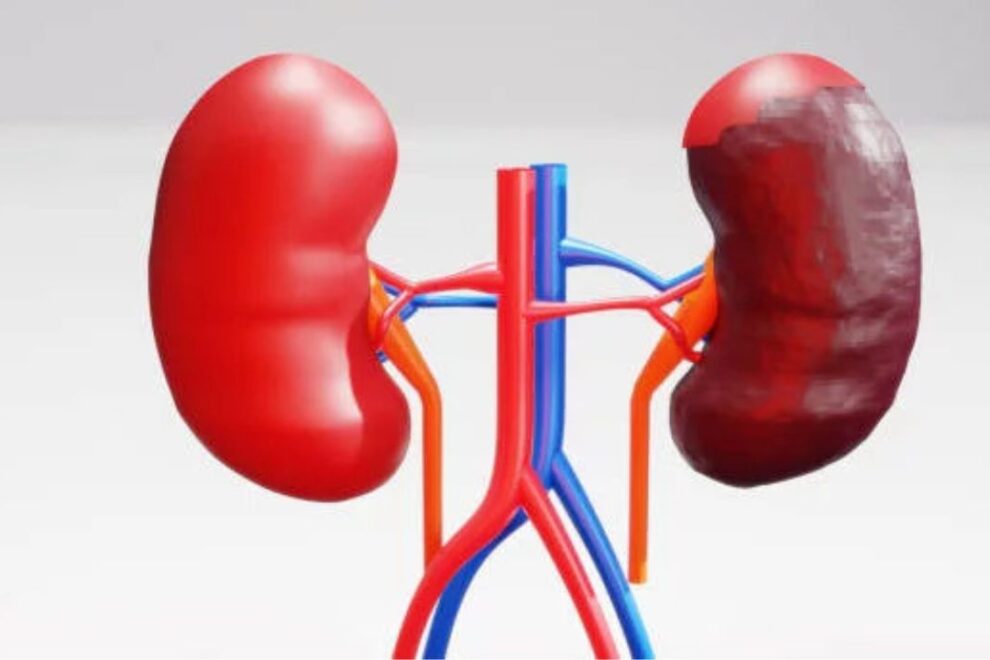Affordable Radical Nephrectomy in India: Top Hospitals & Surgeons
Definition Surgery in india
A nephrectomy is a surgical procedure for the removal of a kidney or section of a kidney.
Purpose
Nephrectomy, or kidney removal, is performed on patients with severe kidney damage from disease, injury, or congenital conditions.


Emergency Cases
These include cancer of the kidney (renal cell carcinoma); polycystic kidney disease (a disease in which cysts, or sac-like structures, displace healthy kidney tissue); and serious kidney infections. It is also used to remove a healthy kidney from a donor for the purposes of kidney transplantation.
Description Surgery in india
Nephrectomy may involve removing a small portion of the kidney or the entire organ and surrounding tissues. In partial nephrectomy, only the diseased or infected portion of the kidney is removed. Radical nephrectomy involves removing the entire kidney, a section of the tube leading to the bladder (ureter), the gland that sits atop the kidney (adrenal gland), and the fatty tissue surrounding the kidney. A simple nephrectomy performed for living donor transplant purposes requires removal of the kidney and a section of the attached ureter.
Open nephrectomy Surgery in india
In a traditional, open nephrectomy, the kidney donor is administered general anesthesia and a 6-10 in (15.2-25.4 cm) incision through several layers of muscle is made on the side or front of the abdomen. The blood vessels connecting the kidney to the donor are cut and clamped, and the ureter is also cut between the bladder and kidney and clamped. Depending on the type of nephrectomy procedure being performed, the ureter, adrenal gland, and/or surrounding tissue may also be cut. The kidney is removed and the vessels and ureter are then tied off and the incision is sutured (sewn up). The surgical procedure can take up to three hours, depending on the type of nephrectomy being performed.
Looking for a free cost estimate for Cosmetic Surgery in India abroad –click here
Or email at [email protected] / Call +91 9029304141
Laparoscopic Nephrectomy Surgery in india
Laparoscopic nephrectomy is a form of minimally invasive surgery that utilizes instruments on long, narrow rods to view, cut, and remove the kidney. The surgeon views the kidney and surrounding tissue with a flexible videoscope. The videoscope and surgical instruments are maneuvered through four small incisions in the abdomen, and carbon dioxide is pumped into the abdominal cavity to inflate it and improve visualization of the kidney. Once the kidney is isolated, it is secured in a bag and pulled through a fifth incision, approximately 3 in (7.6 cm) wide, in the front of the abdominal wall below the navel. Although this surgical technique takes slightly longer than a traditional nephrectomy, preliminary studies have shown that it promotes a faster recovery time, shorter hospital stays, and less post-operative pain.
A modified laparoscopic technique called hand-assisted laparoscopic nephrectomy may also be used to remove the kidney. In the hand-assisted surgery, a small incision of 3-5 in (7.6-12.7 cm) is made in the patient’s abdomen. The incision allows the surgeon to place his hand in the abdominal cavity using a special surgical glove that also maintains a seal for the inflation of the abdominal cavity with carbon dioxide. This technique gives the surgeon the benefit of using his hands to feel the kidney and related structures. The kidney is then removed by hand through the incision instead of with a bag.
Diagnosis/Preparation Surgery in india
Prior to surgery, blood samples will be taken from the patient to type and crossmatch in case transfusion is required during surgery. A catheter will also be inserted into the patient’s bladder. The surgical procedure will be described to the patient, along with the possible risks.
Aftercare Surgery in india
Nephrectomy patients may experience considerable discomfort in the area of the incision. Patients may also experience numbness, caused by severed nerves, near or on the incision. Pain relievers are administered following the surgical procedure and during the recovery period on an as-needed basis. Although deep breathing and coughing may be painful due to the proximity of the incision to the diaphragm, breathing exercises are encouraged to prevent pneumonia. Patients should not drive an automobile for a minimum of two weeks.
Do you have your medical reports; send us now for a free quote –click here
Or email at [email protected] / Call +91 9029304141
Risks
Possible complications of a nephrectomy procedure include infection, bleeding (hemorrhage), and post-operative pneumonia. There is also the risk of kidney failure in a patient with impaired function or disease in the remaining kidney.
Normal results Surgery in india
Normal results of a nephrectomy are dependent on the purpose of the procedure and the type of nephrectomy performed. Immediately following the procedure, it is normal for patients to experience pain near the incision site, particularly when coughing or breathing deeply. Renal function of the patient is monitored carefully after surgery. If the remaining kidney is healthy, it will increase its functioning over time to compensate for the loss of the removed kidney.
Length of hospitalization depends on the type of nephrectomy procedure. Patients who have undergone a laparoscopic radical nephrectomy may be discharged two to four days after surgery. Traditional open nephrectomy patients are typically hospitalized for about a week. Recovery time will also vary, on average from three to six weeks.
Want to know about the Treatment hospitals in India? Take a free second opinion –click here
Or email at [email protected] / Call +91 9029304141
Read Also :-
- Stenting for GI Tract Surgery: A Minimally Invasive Solution in Digestive Health
- Surrogacy Agency in India: Professional Guidance for Your Parenthood Journey
- Sigmoidoscopy Surgery in India: Early Detection and Affordable Care for Colon Health
- Advanced Spondylosis Surgery in India: Procedures, Costs & Leading Hospitals
- Stenting for GI Tract Surgery: A Minimally Invasive Solution in Digestive Health
- Sigmoid Colectomy in India: Advanced and Affordable Colon Surgery
Committed To Build Positive, Safe, Patient Focused Culture.
High Quality
Care
Home Review
Medicine
All Advanced
Equipment
Book An Appointment

At We Care India, we offer complete medical services for your entire family, from routine check-ups to injury care, ensuring personalized attention and expert assistance for all your health needs.
More Treatments
Book An Appointment
Phone
+91 9029304141
Our Locations in India
Delhi
Mumbai
Bangalore
Chennai
Hyderabad


